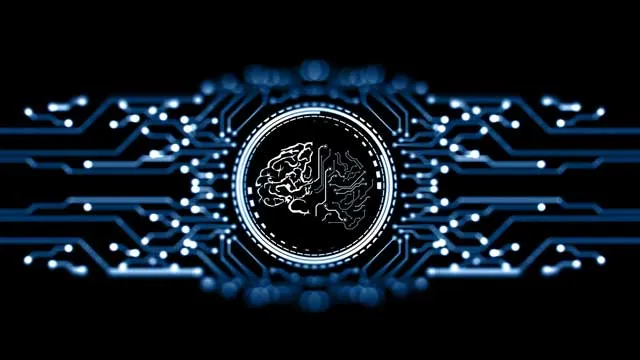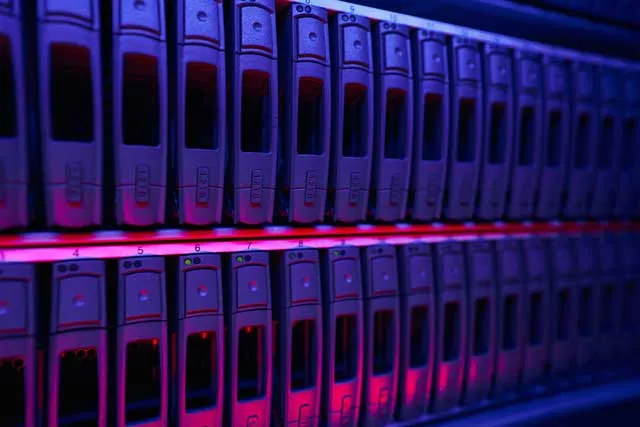Step into the captivating world of log video formats, where cutting-edge technology meets creative innovation.
In this post, we explore the latest trends and developments shaping the future of video production, from High Dynamic Range and Wide Color Gamut to groundbreaking codecs and AI-driven enhancements.
Get ready to embrace the next wave of visual storytelling as we dive deep into the future of log video formats and the technologies to watch.

High Dynamic Range and Wide Color Gamut
As technology advances, the demand for stunning visuals grows.
High Dynamic Range (HDR) and Wide Color Gamut (WCG) promise richer colors and deeper contrasts.
These features redefine the viewing experience, making images more vibrant and lifelike.
The integration of HDR and WCG in log video formats will shape the future of video production and consumption.

Emerging Log Video Formats
LOG video formats are pivotal for capturing high-quality video while retaining flexibility in post-production.
They allow for greater control over color grading and other aspects of video editing.
Recent advancements have further refined LOG video formats, making them more accessible and user-friendly.
RAW Versus LOG: RAW and LOG formats are often compared.
While RAW video is unprocessed, LOG video is processed in-camera, capturing a wide dynamic range with a flat profile.
This makes LOG a preferred choice for many videographers as it provides a good balance between flexibility and file size.
LOG Advancements: Recent years have seen a steady evolution in LOG video formats. Innovations have led to better color reproduction, increased dynamic range, and more efficient codecs.
These advancements aid in smoother post-production workflows, enabling creators to achieve desired visuals with less effort.
Technological Integration: Integration with advanced technologies like AI has also been noteworthy.
AI-powered tools assist in color grading and correction, making it easier to work with LOG footage.
This synergy between LOG video formats and modern technology enhances the post-production process, ensuring better results with less manual input.
Accessibility: The increased accessibility of LOG video formats has made high-quality video production more attainable for a broader range of creators.
Improved user interfaces, tutorials, and community support are contributing factors to this trend, lowering the barrier to entry and encouraging more creators to explore LOG video formats.
The integration of ACES format video into the iPhone 15 Pro is a great example of high-quality LOG footage placed in a consumer device.

Expanding Codec Options
With tons of codecs available, creators must choose the best one for their needs.
The future will bring even more advanced codecs, focusing on better compression and improved image quality.
Look out for innovations like H.266/VVC and AV1, which promise higher efficiency and lower file sizes.

Machine Learning and AI
Machine learning and AI are revolutionizing video production.
Expect to see advancements in AI-driven denoising, upscaling, and color grading.
These tools will enhance log video formats and streamline the post-production process, allowing creators to focus on the artistic side of their work.

Cloud-based Collaboration
The rise of cloud technology is reshaping the video production landscape.
Cloud-based platforms enable seamless collaboration, allowing teams to work together in real-time.
This trend is likely to impact log video formats, making them more accessible and fostering greater cooperation between artists and technicians.

Real-time Ray Tracing
Real-time ray tracing simulates how light interacts with objects, resulting in stunningly realistic visuals.
This technology will revolutionize video game graphics and visual effects in film.
As real-time ray tracing becomes more widespread, log video formats will need to adapt to accommodate the demands of this cutting-edge technology.

Future of Log Video Formats Frequently Asked Questions
What are log video formats?
Log video formats are designed to preserve a wide dynamic range and color gamut in the recording process. They flatten the image's contrast and color saturation, allowing for greater flexibility and control during post-production color grading.
Why are log video formats important?
Log video formats are essential for capturing the maximum amount of detail in high-contrast scenes. This increased latitude provides filmmakers with more creative options when it comes to color grading and image manipulation in post-production.
What is HDR and why does it matter?
High Dynamic Range (HDR) is a technology that expands the range of brightness and color in video content. HDR allows for deeper blacks, brighter whites, and more vivid colors, resulting in a more lifelike and immersive viewing experience.
What is Wide Color Gamut (WCG)?
Wide Color Gamut (WCG) refers to the range of colors that can be represented by a display. A wider color gamut allows for more accurate and vibrant color reproduction, leading to a more visually appealing image.
How do codecs affect log video formats?
Codecs are responsible for compressing and decompressing video files. The choice of codec can impact the quality and file size of log video formats, as well as the compatibility with various devices and platforms.
What is H.266/VVC?
H.266/VVC (Versatile Video Coding) is a new video codec that aims to provide better compression efficiency than its predecessors, such as H.264 and H.265. This improvement results in smaller file sizes without sacrificing image quality.
What is AV1 and why is it important?
AV1 is an open-source, royalty-free video codec developed by the Alliance for Open Media. It offers better compression efficiency compared to other codecs, reducing file sizes and bandwidth requirements. This makes it ideal for streaming and other online video applications.
How does AI impact log video formats?
AI can be used to improve the quality of log video formats by denoising, upscaling, and color grading. These advancements streamline the post-production process and allow creators to focus on the artistic aspects of their projects. As AI technology advances, we can expect even more sophisticated tools to enhance log video formats.
What is real-time ray tracing?
Real-time ray tracing is a rendering technique that simulates the behavior of light as it interacts with objects in a scene. This technology allows for incredibly realistic visuals, especially when it comes to reflections, shadows, and other lighting effects. As real-time ray tracing becomes more prevalent, log video formats will need to evolve to accommodate the demands of this groundbreaking technology.
How does cloud-based collaboration impact log video formats?
Cloud-based collaboration enables artists and technicians to work together in real-time on video projects. This approach streamlines the production process and allows for greater flexibility when working with log video formats. As cloud technology continues to advance, we can expect even more seamless integration of log video formats into cloud-based workflows.

About the Author
Joseph Nilo has been working professionally in all aspects of audio and video production for over twenty years. His day-to-day work finds him working as a video editor, 2D and 3D motion graphics designer, voiceover artist and audio engineer, and colorist for corporate projects and feature films.
Parent Article:
Log Video Formats Reference Guide
Related Articles:
The Evolution of Log Video Formats
Demystifying Log Video Formats
Log Video Formats vs. Traditional Video Formats
Top 10 Log Video Format Cameras
Color Grading Techniques for Log Video Formats
The Impact of Log Video Formats on Modern Cinematography
Mastering Post-Production Workflows for Log Video Formats
Best Practices for Archiving and Storing Log Video Format Files
Video Editing Related Posts
Adobe Creative Cloud for Video Editing
Top 10 Video Editing Software for Mac
The Benefits of Dual-Monitor Setups for Video Editing
How to Choose the Right Video Editing Monitor for Your Needs
Best Monitors for Video Editing
Best Video Editing Software in 2023
Best Mac for Video Editing in 2023
(Almost) 50 Mistakes Every New Video Producer Makes
Breakthrough AI Tools: Elevate Your Video Production Game!
- High Dynamic Range And Wide Color Gamut
- Emerging Log Video Formats
- Expanding Codec Options
- Machine Learning And AI
- Cloud-Based Collaboration
- Real-Time Ray Tracing
- Future Of Log Video Formats FAQ
Parent Article:
Log Video Formats Reference Guide
Related Articles:
The Evolution of Log Video Formats
Demystifying Log Video Formats
Log Video Formats vs. Traditional Video Formats
Top 10 Log Video Format Cameras
Color Grading Techniques for Log Video Formats
The Impact of Log Video Formats on Modern Cinematography
Mastering Post-Production Workflows for Log Video Formats
Best Practices for Archiving and Storing Log Video Format Files
Video Editing Related Posts
Adobe Creative Cloud for Video Editing
Top 10 Video Editing Software for Mac
The Benefits of Dual-Monitor Setups for Video Editing
How to Choose the Right Video Editing Monitor for Your Needs
Best Monitors for Video Editing
Best Video Editing Software in 2023
Best Mac for Video Editing in 2023
(Almost) 50 Mistakes Every New Video Producer Makes
Breakthrough AI Tools: Elevate Your Video Production Game!
